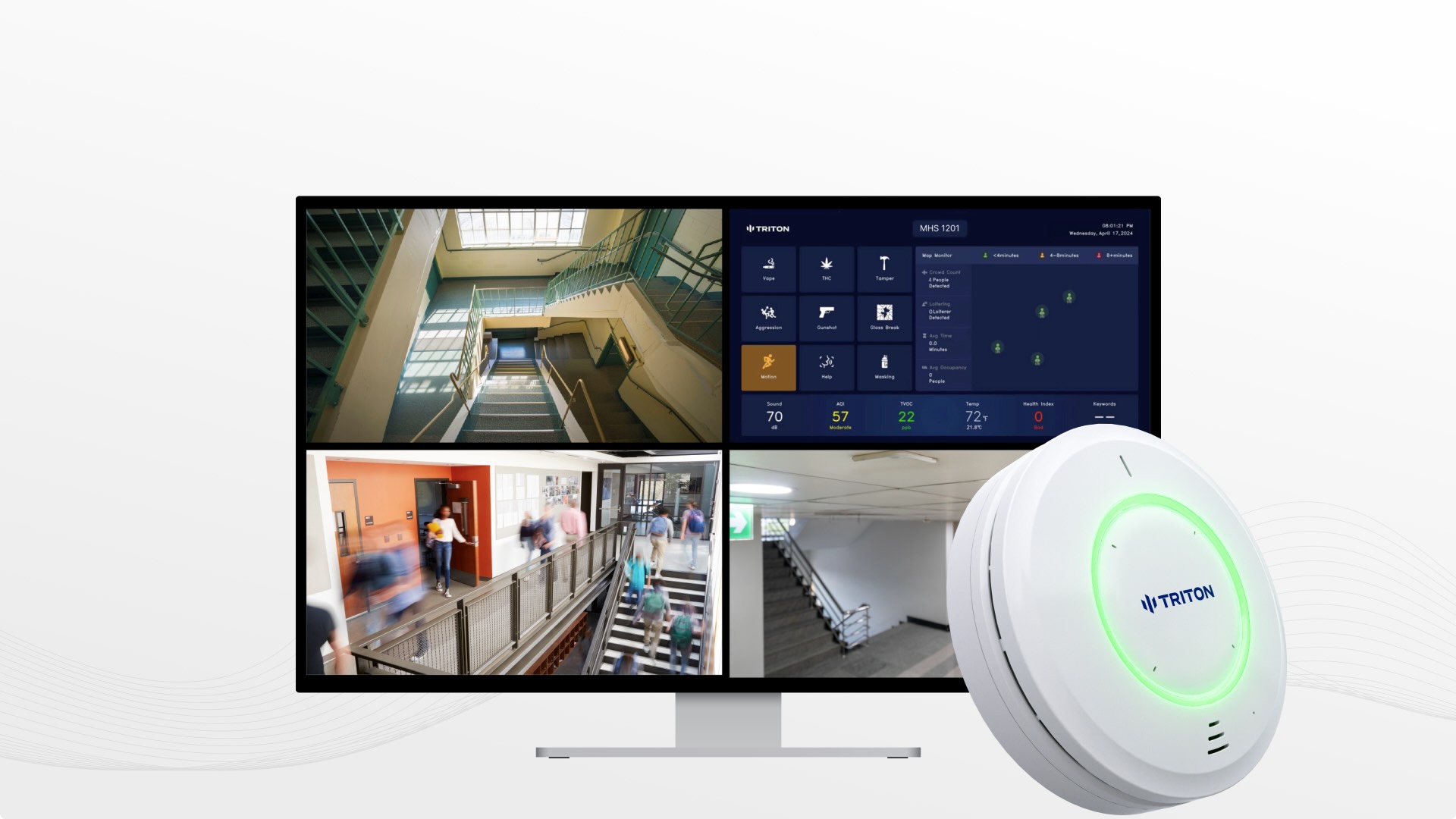Vape detectors, as opposed to traditional smoke detectors, are specially developed to recognize unique chemical and aerosols produced by e-cigarettes. They use advanced vape sensors to track the quality of the air in real time by detecting compounds such as nicotine, THC, and other dangerous substances. The system will notify users immediately when vaping has been identified as a cause of the problem.

Image credit: tritonsensors.com
Modern vape detectors can detect the use of vape at schools in a manner that is more effective than traditional detection. They are equipped with certain unique features that make them indispensable in fighting the growing vaping epidemic.
1. AI-Powered Substance Identification : Leveraging artificial intelligence, vape detectors are able to learn and adapt in time. They can differentiate between harmful substances like nicotine and THC and harmless aerosols such as steam. This technology helps reduce false alarms and helps to detect harmful substances within school settings.
2. Flexible sensitivity settings : Schools can be of any size and shape, with a range of kinds of environmental conditions. Vape detectors allow administrators to personalize sensitivity settings for different places, like restrooms, locker rooms and hallways, optimizing performance based on the specific requirements of the particular location.
3. Tamper-Resistant Design – Built with solid materials and tamper-alert system Vape detectors provide consistent operation even when children attempt to disable or block the devices. Instant notifications are sent to the administrators in case tampering is detected, enhancing security and reliability.
4. Behavioral Pattern Recognition : Modern Vape Detectors are capable of identifying patterns in behavior such as gatherings at remote places. This feature enables schools to address problematic behavior and create a safer atmosphere.
5. Integration with School Communication Systems : Advanced vape detectors can now integrate seamlessly with school-wide communication platforms, like messaging apps or PA systems. This allows staff to receive notifications in real time without affecting the entire school community.
6. Energy-efficient Operation: The new vape detectors were designed to be energy-efficient and sustainable. They consume a minimal amount of energy, which ensures a long-term, reliable operation. This feature is especially useful for schools with large campuses, where numerous devices are required to cover the campus effectively.
7. Odor Analysis for Better Vape Detection : Some vape detectors today incorporate odor analysis to detect scented E-cigarette vapors that can be difficult to spot. This can increase the range of detection and makes it possible to detect even the most subtle vaping activities.
Vape detectors: Their role in schools
Implementing vape detection at schools is more than just a way to detect vaping. It’s a proactive step toward a healthier and more concentrated learning environment.
Enhancing Student Safety
Through identifying early vaping problems Vape detectors can reduce the exposure to dangerous substances, protecting students from the immediate and long-term risk to their health.
Promoting Accountability
Instant alerts hold students accountable for their conduct, emphasizing the importance of adhering to school guidelines and encouraging responsible behavior.
Supporting Prevention Efforts
By analyzing the data from vape detectors, schools can better understand the scope of the issue and come up with comprehensive prevention strategies. This could include getting parents involved, informing students about the dangers of vaping, as well as providing assistance for those who are struggling with addiction.
The Impact of Vape Detection Technology
Vaping incidents have been reduced drastically in schools that have advanced smoke detectors for smoking vapes. One example is that a high school in Texas reported 75% less reported incidents within three months of putting vape detectors in bathrooms as well as locker rooms. Similarly, a school district in California reported improved behavior among students and less discipline issues after incorporating vape detectors into their safety protocols.
These success tales demonstrate how technology can be used to make a significant difference in education.
Implementing a Comprehensive Strategy Against Vaping
While vape detectors are an effective instrument, they are most effective when they are integrated into the larger strategy. Schools must:
1. Instruct Students: Hold regular seminars about the dangers of smoking vape by highlighting the health risks and potential effects on future opportunities.
2. Engage Parents: Offer resources to help parents recognize the signs of smoking and assist their children in making healthier choices.
3. Encourage open communication: Encourage students to speak up about vaping, peer pressure and other issues that affect their health.
4. Collaboration with Community Partners: Strengthen anti-vaping efforts by collaborating with local law enforcement agencies and health organizations.
Conclusion: Paving the way for safer schools
The vaping epidemic in schools requires innovative solutions, and advanced vape detector are leading the charge. By combining real-time detection, multi-substance monitoring, and analytics based on data they empower schools to manage vaping and help create a healthier atmosphere for students.
But the battle against vaping doesn’t end at technology. A holistic approach that includes the involvement of parents, education, and community involvement is crucial for tackling this issue effectively. These tools and strategies could help schools create a healthier and safer future for their students.
Get your school on the right track if it is having trouble with the vaping crisis. Think about investing in vape smoke detectors and taking proactive steps to protect your students and campus. We can rid the air, and ensure that every student is able to thrive in a safe and a supportive environment.
